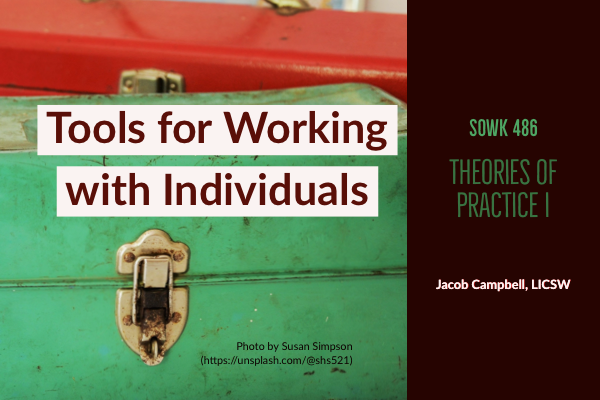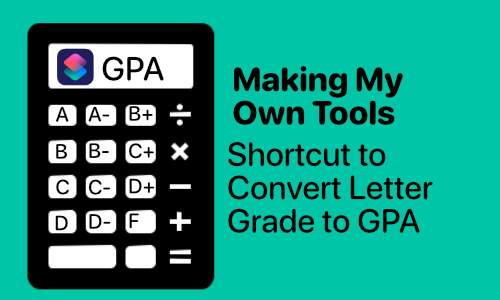Fall 2024 SOWK 486w Class 02 Weekly Email
Email sent on to SOWK 486

I am looking forward to seeing you all on Wednesday.
Unit Introduction and What You Will Learn
Week two is a cross-sectional look at some perspectives, frameworks, and theories commonly used in social work. It should assist in gaining awareness about the difference between these ways of thinking discussed in social work literature. We will look into the following:
- Perspectives, theories, and frameworks
- Systems theory
- Ecological perspective
- Strengths perspective
- Solution-focused brief therapy
Learning Objectives:
- Students will be able to articulate the difference between perspectives, theories, and frameworks.
- Students will gain general knowledge of system theory, ecological perspective, strengths perspective, and solution-focused brief therapy.
- Students will integrate theory knowledge and how it can be applied to client situations.
- Students will be prepared to develop their integrative paper and writing using APA formatting.
Unit Assignments
This week, your assignments include attending class and reading. You have a couple of readings from journal articles. No reading quiz must be completed.
Read
In-Class Attendance and Participation
Attend class
Unit Resources
The readings for this week are not out of the textbook and are being provided to help supplement the discussion. When we are talking about strengths perspective, one way we will frame the discussion is using ROPES (Graybeal, 2001)). We won’t talk about them directly during class. Green and McDermott (2010) provide some context and understanding related to the person in the environment. De Jonge and Miller (1995) give helpful ideas for how to draw out strengths from clients, which is an essential aspect of implementing strengths perspective. The hope of these readings1 is to introduce you to some peer-reviewed journal articles and some of the theories they discuss. It can help develop your integrative paper, which is due in October. Next week, your readings focus some on the orienting perspectives in social work; these are also a great resource.
Last week, we ran out of time to discuss academic writing and APA formatting. We will spend some time talking about that. As I described in Week 1’s Course Page. I’ve uploaded the lecture video there (as well in the lecture video section of this course if you want to look back at it). One thing we will review is some information from the APA website. Many students find using APA intimidating, but it is very learnable. Along with their style guide, their website is a great resource. They have lots of examples and helpful descriptions. Two documents, in particular, are beneficial:
The presentation for [Fall 2024 SOWK 486w Week 02 - Practice Related to Perspectives, Frameworks, & Theories]() will be posted before class on Wednesday.
If you are interested, I have a video discussing using Zotero to keep my references updated. You can see it at Transdisciplinary Literature Reviews using Zotero, How I Manage References [YouTube Video].
A couple of years ago, when I was teaching SOWK 459, Social Science Research Methods, I had a lesson Week 04 - Theoretical Frameworks - What is behind the research that we complete, which had some excellent information to dive a bit more into various theories within social work.
You can find the recording of all of our classes in the lecture videos for this course. You can find [Fall 2024 SOWK 486w 1 - Week 02]().
Reference
Green, D., & McDermott, F. (2010). Social work from inside and between complex systems: Perspectives on person-in-environment for today’s social work. British Journal of Social Work, 40(8), 2414–2430. https://doi.org/10.1093/bjsw/bcq056
De Jonge, P., & Miller, S. D. (1995). How to interview for the client’s strengths. Social Work, 40(6), 729–736. https://doi.org/10.1093/sw/40.6.729
Graybeal, C. (2001). Strengths-based social work assessment: Transforming the dominant paradigm. Families in Society: The Journal of Contemporary Social Services, 82(3), 233-242. https://doi.org/10.1606/1044-3894.236
To-Do Lists
- Attend class on Wednesday at 5:30 PM
- Complete readings for Green and McDermott (2010) and De Jonge and Miller (1995)]. Optionally, the Graybeal (2001) article is also really good.
- Consider watching Transdisciplinary Literature Reviews using Zotero, How I Manage References [YouTube Video]
- Check out the other resources provided.
-
Please note that using the author’s names in the “text” of my discussion here is an in-text citation, and there are also reference list entries. This is what APA formatting looks like in writing. You will see it in your textbook and most journal articles you read as part of your ongoing studies. There is a link at the end of each reference. This is what is called a DOI number. It is helpful to find the discussed article and put the material into software like Zotero or Mendeley. The
https://doi.org/URL does not generally give you access to read the article, as it usually takes you to the journal’s abstract page for the piece. Most journals cost, and you can access them through the university library (unless it’s open access). I’ve turned the title of each article into a link attached to the file so you can download and read the article. ↩




